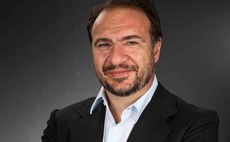
Taiwan LPs: Hare and tortoise

GPs are watching with interest as Taiwan restructures its labor pension fund system, thinking of potential LP commitments. But insurers remain the most active players in the market, and they want to do more
Taiwan's labor pension fund system is in transition. Earlier this year, the silos separating six public labor fund schemes were broken down to create a single investment department - the Bureau of Labor Fund (BLF). With $80 billion in pension, retirement and insurance assets to draw upon, this new entity has the ability to make larger commitments to larger managers.
Alternatives will feature more strongly than before in the combined allocation. Having recently committed $200 million to a global infrastructure GP under a former scheme, BLF plans to invest a further $200 million in alternatives over the next year. This capital will not flow into private equity. The beneficiaries will be real estate investment trusts (REITS) and infrastructure, in accordance with previous practice.
Even without a specific private equity allocation, the move has fueled speculation that Taiwan's pension fund will soon become a significant new target for international GPs. BLF may end up following the path trodden by many of its counterparts globally in building up exposure to alternatives: start with yield-producing assets such as real estate and infrastructure, then broaden the scope of investments to include other asset classes, including private equity.
"There is a lot of activity, from advisers to gatekeepers, happening in Taiwan, which means they see an opportunity to meet and work with potential new LPs," says Mounir Guen, founder and CEO of MVision. "We are seeing more regular activities concerning Taiwanese institutional investors. Right now the LPs are mostly insurance companies, but pension funds aren't that far behind them."
To many, the labor fund schemes merger is a significant step in this evolutionary process. Others, however, are more skeptical on the pace of progress. If Taiwan's pension funds are only just starting to consider putting private equity in their portfolios, actual allocations into the asset class are unlikely to happen in any time soon.
Andy Tsai, managing director at StepStone Group, argues that the recent structural reform has nothing to do with looking at new asset classes like private equity. It is an efficiency drive, pure and simple - and a positive one. "By making more efficient use of investment expertise across the funds, it could potentially take on new investment strategies," he says. "But in the short term, integration issues have to be addressed between different departments."
Regulatory spider's web
Prior to labor funds reform, there were four major pension and government-related funds in Taiwan - the Labor Insurance Fund, the Labor Pension Fund, the Public Service Fund and Chunghwa Post, also known as Postal Savings Fund. Between them they had more than NT$7 trillion ($230 billion) in assets.
The $38 billion Labor Pension Fund and $19 billion Labor Insurance Fund were regulated by different government bodies. The Labor Pension Fund Supervisory Committee (LPFSC) was responsible for two labor pension funds - the Labor Retirement Fund and the newer Labor Pension Fund. The former operates under a defined benefit (DB) model while the latter is defined contribution (DC).
In addition to the labor pension funds, the BLF platform also absorbed four labor insurance and reimbursement schemes, formerly controlled by the Bureau of Labor Insurance Department.
StepStone's Tsai explains the newer Labor Pension Fund, which replaced the old scheme in 2005, is the most suitable candidate for capital commitments into private equity. As a DC system - where responsibility for providing the pension lies with the employee, not the employer - it has greater flexibility and fewer existing liabilities. However, the newly-established bureau has no plans to invest in PE.
Neither of the other two major pension systems - the Public Service Fund and Chunghwa Post - have made investments in private equity. Industry participants attribute this to two key factors: an absence of industry know-how and a lack of familiarity with the regulatory regime.
Firstly, Taiwan's pension funds are used to investing in domestic government bonds and public equities. There is little or no experience of private markets and there are no established investment teams that could redress the balance. Secondly, pension funds have a residual discomfort with illiquid assets, long holding periods and a lack of information transparency.
"High liquidity and a high level of information disclosure do matter to us," Chao-Hsi Huang, BLF's director general, told AVCJ. "Although investors could generally obtain higher returns from private equity investments compared to buying stocks, this type of investment might not be what we favor right now."
However, the fundamental issue is that the government is unaware of the benefits the asset class could bring - so there is no push, formal or informal to build an exposure to private equity. It would help if a government agency were willing to assume responsibility for promoting private equity investment, but as it stands, none are.
"People would look at this asset class seriously if it started to be regulated. But it's unclear which agencies should be responsible for taking the lead," says a senior investment professional with a Taiwan financial institution. "We have tried to promote the asset class to government-related funds. Some government officials have even suggested setting up a sovereign wealth fund (SWF) to generate better investment income. But there have been years of talks without any progress."
There is a indeed a strong case to be made for the government setting up a SWF to help cover future pension liabilities and other social needs. Like most other countries in the region, Taiwan's population is aging rapidly.
The fertility rate, which stood at four children per woman in 1970, dropped to 1.2 in 2005. It is estimated to be 1.11 in 2014, according to the CIA World Factbook, ahead of only Macau and Singapore. The old-age dependency ratio - the number of people age 65 and older per 100 working age people (aged 15-64) - is currently quite favorable at 13, but it is expected to increase dramatically to 63 by 2050. Taiwan's total population will drop from 22.8 million to 19.8 million over the same period.
"The likes of China, South Korea and Japan, and certain Southeast Asian, all have their own versions of SWFs. Taiwan has yet to develop one despite years of discussions. It's difficult to figure out why but I would imagine the political environment could be a factor," says Vincent Ng, a partner at Atlantic-Pacific Capital. "They appear to be moving in the right direction, but it may take some time before a SWF is in place to start investing into alternatives."
Structural reform aside, industry participants suggest Taiwan should adopt a top-up approach to promote the PE asset class, starting from the government level. Two agencies are seen as well-placed to take the initiative: the Ministry of Labor, which oversees the Labor Pension Fund; and the Economic Development Council, which supervises venture capital investments made by the National Development Fund.
Insurance angle
It may turn out to be the longest of long games, and in the meantime, insurance companies represent Taiwan's most significant LP constituency.
There are about seven insurance companies looking at alternatives opportunities, with total assets of $6-8 billion. In terms of capital deployment, there are three main groups - Cathay Life Insurance, Fubon Life Insurance and Nanshan Life Insurance. And Nanshan only started making commitments to the asset class last year.
"The insurance companies are at various stages of development as it relates to investing in PE. Groups like Fubon and Cathay started making private equity and alternative investments a lot earlier. They have been in the market for several years, have established deep portfolios, and will continue for investing, while Nanshan is still at an early stage of portfolio construction. Having said that, Nanshan has been very active in the last year or so, investing in some top-tier global GP brand names," says Atlantic-Pacific's Ng.
He estimates the group has invested $500 million to $1 billion in alternative assets already, if not more.
Cathay, the largest insurer in Taiwan by assets under management, ventured into alternative investments in the wake of global financial crisis in 2008. It initially invested through fund-of-funds and some separate account mandates, and has accumulated around 60 GP relationships. Most of these managers are in North America and Europe, partly because insurers are only allowed to invest in GPs registered in member nations of the Organization for Economic Co-operation and Development (OECD).
With alternative assets programs still in their nascent stages, the industry regulator - the Financial Supervisory Commission (FSC) - allows insurers to invest no more than 2% of their total assets in private equity and hedge funds. It is a relatively small proportion compared to other developed markets, where financial institutions can allocate as much as 10%. Nevertheless, with about $130 billion in assets, Cathay has a sizeable $2.6 billion to deploy in PE and hedge funds.
"Apart from GPs' track records, in recent years we have started evaluating whether they have specialized strategies, such as financial services or energy," says Allen Lee, head of alternative investments at Cathay. "While we will maintain close relationships with top-tier GPs, we will award separate account mandates or use fund-of-funds to look at mid-market GPs - an area we're less familiar with. If mid-cap managers perform well and want to raise next funds, we can deal with the GPs directly without going through the third-party groups."
Lee says yield-generating products are important to Cathay, notably credit, mezzanine and infrastructure funds. These asset classes can deliver income to supplement the current payout burdens on underlying insurance programs. It is very different behavior from the newer insurance groups, though. Nanshan, for example, will focus more on mega funds launched by brand name GPs pursuing buyout strategies, Atlantic-Pacific's Ng says.
Given the continued low interest rate environment, insurers are eager to deploy capital in order to generate higher returns. But the local market lacks ample supply of diversified investment instruments, such as private equity and other alternative assets.
Last April, restrictions were lifted on the island's insurance companies acquiring overseas commercial property. The regulators then permitted insurers to make direct investments in overseas financial services sectors. In August, Cathay purchased an office building in the city of London from TPG Capital and Canada's Ivanhoe Cambridge for GBP311 million ($516 million). It is the first Taiwanese insurance firm to get exposure in this space.
"Taiwanese insurers are desperate and they're under pressure to look for higher returns in overseas investments. The regulator realized that if it continued to prevent insurance companies from investing in other sectors, industry players would suffer financial losses," says Sonia Sun, a partner at KPMG Law Firm. "Private equity can't accommodate the needs of insurance companies to deploy capital, so opening up overseas real assets and financial assets for investment makes sense."
Future plans
There are a handful of home-grown private equity firms setting up with a view to attracting capital from insurance companies. However, the FSC keeps a close watch over the industry due to its immaturity. While overseas investment approvals come relatively fast, domestic are slow - 3-4 months or more - because they are dealt with on a case-by-case basis. approval is slow as the regulator will review on a deal-by-deal basis.
The general expectation is that the more established insurance players will see further investment liberalization, allowing them to participate in co-investments alongside international GPs. Beyond that, they hope to play the GP role themselves and make direct investments.
"There are two things on LPs' minds - co-investment and direct investment. Apart from reducing management fees, we could also be more involved in the due diligence, transaction and portfolio management process," Cathay's Lee says. "With those in place, we can control the process as well as seek higher returns without paying management fees and carried interests."
Furthermore, new participants hope the 2% ceiling on private equity and hedge fund exposure will be raised. "We have already started lobbying with the regulator to allow us to allocate more capital to the asset class but it seems this not yet been put into the regulatory agenda," says one insurer.
Latest News
Asian GPs slow implementation of ESG policies - survey
Asia-based private equity firms are assigning more dedicated resources to environment, social, and governance (ESG) programmes, but policy changes have slowed in the past 12 months, in part due to concerns raised internally and by LPs, according to a...
Singapore fintech start-up LXA gets $10m seed round
New Enterprise Associates (NEA) has led a USD 10m seed round for Singapore’s LXA, a financial technology start-up launched by a former Asia senior executive at The Blackstone Group.
India's InCred announces $60m round, claims unicorn status
Indian non-bank lender InCred Financial Services said it has received INR 5bn (USD 60m) at a valuation of at least USD 1bn from unnamed investors including “a global private equity fund.”
Insight leads $50m round for Australia's Roller
Insight Partners has led a USD 50m round for Australia’s Roller, a venue management software provider specializing in family fun parks.








